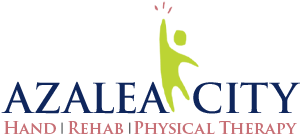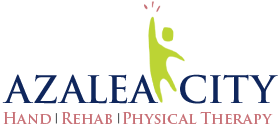Foot Injuries in Mobile AL

Foot injuries in Mobile AL can be a real pain-literally. One day, you're walking just fine, and the next, every step feels like a challenge. Whether you're an athlete, someone who spends a lot of time on your feet, or you just took a misstep, foot injuries are all too common. But what kind of foot injuries are we talking about, and more importantly, what can be done to fix them? If you've ever wondered why your foot feels like it's betraying you, let's dive into the world of foot injuries, what causes them, how they're diagnosed, and how physical therapy/occupational therapy can help you get back to doing what you love.
What Are Common Foot Injuries In Mobile AL?
The human foot is a complex structure, made up of 26 bones, 33 joints, and over 100 muscles, tendons, and ligaments. With so many moving parts, it's no surprise that things can go wrong. Here are some of the most common foot injuries that don't involve the ankle:
- Plantar Fasciitis: A common culprit of foot pain, plantar fasciitis is inflammation of the tissue that runs along the bottom of your foot. It's notorious for causing sharp, stabbing pain in the heel, especially with your first steps in the morning.
- Stress Fractures: These are tiny cracks in the bone, often caused by overuse or repetitive impact. They tend to show up in the metatarsals-the long bones in the middle of the foot-and can make walking or standing for long periods nearly unbearable.
- Turf Toe: Although it's often associated with athletes, anyone can get turf toe. It's a sprain of the big toe joint, usually caused by pushing off the foot forcefully, like in sports.
- Morton's Neuroma: This condition happens when the tissue around a nerve in your foot thickens, causing pain, burning, or a tingling sensation, often between your toes.
- Metatarsalgia: Pain and inflammation in the ball of your foot can occur after high-impact activities like running or jumping. It's often felt as a sharp or aching pain in the metatarsals.
- Heel Spurs: These are bony growths that develop on the bottom of the heel bone, often in people with plantar fasciitis. Heel spurs can make standing and walking feel like you're stepping on something sharp.
- Sesamoiditis: Your foot has small bones embedded within tendons called sesamoids, especially around the big toe. When these bones become inflamed, it leads to sesamoiditis, which makes the front of your foot sore and painful.
What Causes Foot Injuries In Mobile AL?
Foot injuries can happen to anyone, but certain factors increase your risk. Understanding the causes can help prevent these injuries in the future, or at least help you manage them better if they happen.
- Overuse: Just like any part of your body, your feet can wear out when overworked. Running, jumping, or even standing for long periods without proper rest can lead to overuse injuries like stress fractures or plantar fasciitis.
- Improper Footwear: Wearing the wrong shoes can wreak havoc on your feet. High heels, worn-out sneakers, or shoes that don't provide adequate support can lead to all sorts of problems, from heel spurs to metatarsalgia.
- High-impact Activities: Sports and activities that require a lot of jumping or running put extra strain on your feet. Athletes, especially runners, often deal with issues like stress fractures or plantar fasciitis.
- Foot Mechanics: Flat feet, high arches, or other structural abnormalities can throw off the balance of how your foot moves and absorbs impact, making you more susceptible to injuries.
- Trauma: Sometimes, injuries happen in a split second. Dropping something heavy on your foot, taking a wrong step, or stubbing your toe can cause fractures, bruising, or sprains that leave you limping.
How Are Foot Injuries Diagnosed?
When foot pain strikes, it's tempting to try and figure it out yourself, but seeing a physical therapist or healthcare provider is always a good idea. Proper diagnosis is key to getting the right treatment and back to normal faster.
Here's what to expect when you get your foot checked out:
- Physical Examination: A physical therapist will look at your foot's alignment, watch how you walk, and press on different areas to pinpoint where the pain is coming from.
- Medical History: You'll probably be asked about recent activities, any injuries, and when the pain started. It's important to mention things like changes in activity level or footwear, as these can provide valuable clues.
- Imaging Tests: If the physical exam doesn't give a clear diagnosis, imaging tests like X-rays, MRIs, or ultrasounds might be recommended. These tests can help identify fractures, ligament tears, or soft tissue damage that might not be obvious from the outside.
- Range of Motion Tests: Foot injuries often restrict movement, so a therapist may test how well your foot bends, flexes, and rotates. Any limitations in movement can help narrow down the type of injury.
Once you've been properly diagnosed, it's time to talk treatment-and that's where physical therapy/occupational therapy shines.
How Physical Therapy/Occupational Therapy Helps People with Foot Injuries
Foot injuries can feel like they'll never heal, but physical therapy/occupational therapy can make a world of difference. A skilled physical therapist can create a personalized treatment plan designed to address your specific injury, relieve pain, and strengthen your foot to prevent future issues.
Here's how physical therapy/occupational therapy can help:
- Strengthening Exercises: Weak muscles in the foot or lower leg can contribute to foot injuries. Physical therapy/occupational therapy can help strengthen these areas to improve stability and support your foot as it heals.
- Stretching Exercises: Tight muscles, tendons, and fascia are often part of the problem when it comes to foot injuries. Your therapist will guide you through stretches that can improve flexibility and reduce tension in your foot.
- Manual Therapy: Hands-on techniques like massage, mobilization, and soft tissue manipulation can relieve tension, reduce pain, and promote healing. This approach can help with conditions like plantar fasciitis or Morton's neuroma, where tight tissue is part of the problem.
- Footwear Advice: You might need to make some changes to your footwear. Physical therapists can recommend proper shoes or custom orthotics to help relieve pressure and provide support.
- Gait Training: If you've developed an abnormal walking pattern because of your injury, gait training can help correct that. By learning to walk more efficiently, you'll reduce the strain on your feet and prevent further damage.
Physical therapy/occupational therapy offers a non-invasive, effective approach to treating foot injuries, helping you recover more quickly and get back on your feet-without the need for surgery or medications.
What Should You Do if You Think You Have a Foot Injury?
If you're feeling foot pain and think you might have an injury, don't wait it out. Here's what to do:
- Rest: The most important thing you can do is give your foot a break. Avoid activities that make the pain worse and try to stay off your feet as much as possible.
- Ice the Area: Applying ice can help reduce inflammation and numb the pain. Ice your foot for 15 to 20 minutes several times a day, especially after activities.
- Elevate Your Foot: Keeping your foot elevated can help reduce swelling and promote healing.
- Change Your Footwear: Make sure your shoes provide the right support for your foot. If they're worn out or uncomfortable, it's time for a new pair.
- Consult a Physical Therapist: Don't try to tough it out-foot injuries can get worse if left untreated. A physical therapist can assess your injury and design a treatment plan to get you back on track.
Take the Right Steps to Recovery With Physical Therapy/Occupational Therapy
Foot injuries may seem like a minor inconvenience at first, but if ignored, they can become a major roadblock in your life. Whether it's sharp heel pain, a burning sensation between your toes, or tenderness in the ball of your foot, addressing the issue sooner rather than later is key.
Physical therapy/occupational therapy at Azalea City Hand and Rehab and Physical Therapy offers a holistic approach that not only treats the pain but also targets the underlying causes of the injury. So, if your foot's been giving you trouble, don't delay-reach out to a physical therapist in Mobile AL, take care of your feet, and get back to doing what you love, pain-free.
OFFICE HOURS
Monday
8:00am - 5:00pm
Tuesday
8:00am - 5:00pm
Wednesday
8:00am - 5:00pm
Thursday
8:00am - 5:00pm
Friday
8:00am - 12:00pm
Saturday & Sunday
Closed
Azalea City Hand and Rehab and Physical Therapy
316 S Sage Ave Ste C
Mobile, AL 36606


